We all recognize bumble bees buzzing about or honey bees foraging among flowers, but did you know there are more than 300 species of wild bees living in Vermont? These insects depend on pollen as their food source, which also means they spread this pollen between plants. Nearly 90% of flowering plants, including 75% of agricultural crops, benefit from animal pollination. The United States alone grows more than 100 crops that either need or benefit from bee pollination, and the economic value of these native pollinators is estimated at $3 billion per year.
Closer to home, recent research is finding just how important native bees are to agriculture here. For example, scientists at the University of Vermont recently demonstrated that more than 90 species of wild bees visit highbush blueberry flowers on Vermont farms, contributing thousands of dollars of value to the state’s agricultural economy. And nearby in New York, Cornell scientists recently found that native bee diversity is key to better apple production.
In this month’s episode of Outdoor Radio, Kent McFarland and Sara Zahendra visit the University of Vermont Horticultural Farm in South Burlington in search of wild bees with bee expert Leif Richardson, a consultant with Stone Environmental and a researcher at UVM.
Dozens of native bee species can be found right in our gardens and backyards, even in urban and suburban areas. Join the Outdoor Radio team and learn how to tell the difference between a bee and other flying insects. You’ll be able to spot their nests in places you’ve never suspected. And we’ll talk about bee nesting boxes that help some wild bee species. Get all the buzz with Outdoor Radio!
Listen to the show
Learn more
- Volunteer for the Vermont Wild Bee Survey
- Learn about the Vermont Bumble Bee Atlas
- Bee Basics: An introduction to our native bees
- Wild Pollinators of Eastern Apple Orchards and How to Conserve Them
- Xerces Society – Pollinator Conversation Resources – Northeast
- Discover bees and other life in you area and report them to the Vermont Atlas of Life on iNaturalist.
- Miss an episode of Outdoor Radio? Listen anytime anyplace on the web or on your smartphone with our podcast.
More images from the show
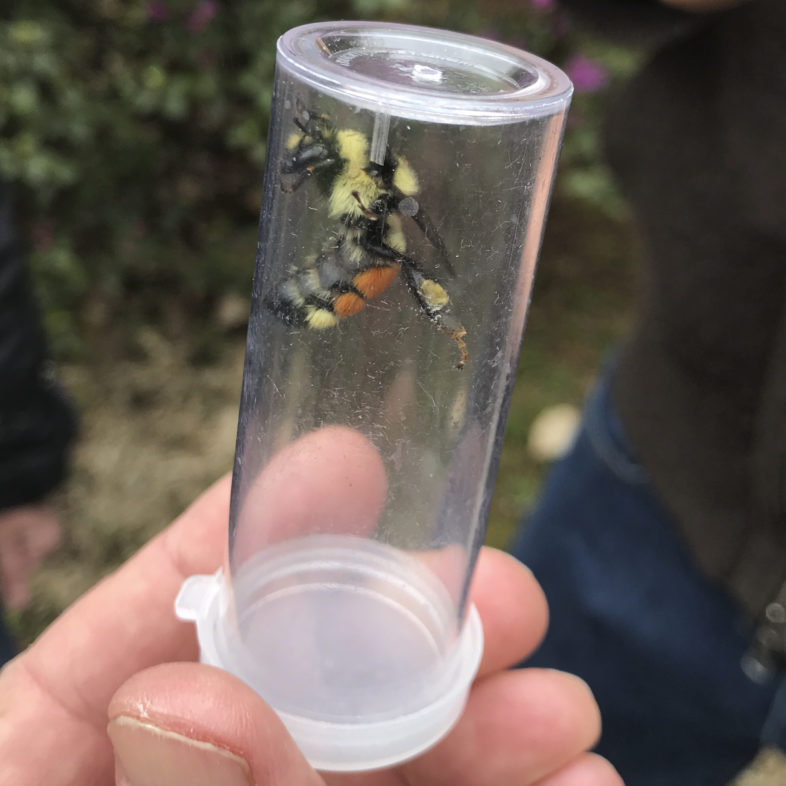
A queen Tri-colored Bumble Bee we captured and released. Note the pollen on her hind leg. The leg has a special “pollen basket”, an area of her leg that is concave with hairs arching over it to hold the pollen loaf in place. / © K.P. McFarland
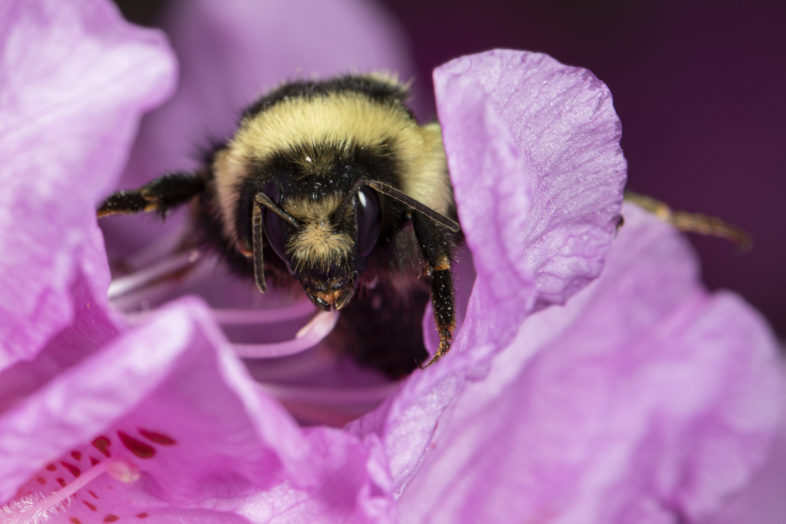
Up close and personal with a queen Tri-colored Bumble Bee probing a flower in the garden. / © K.P. McFarland
Outdoor Radio is produced in collaboration with Vermont Public Radio.
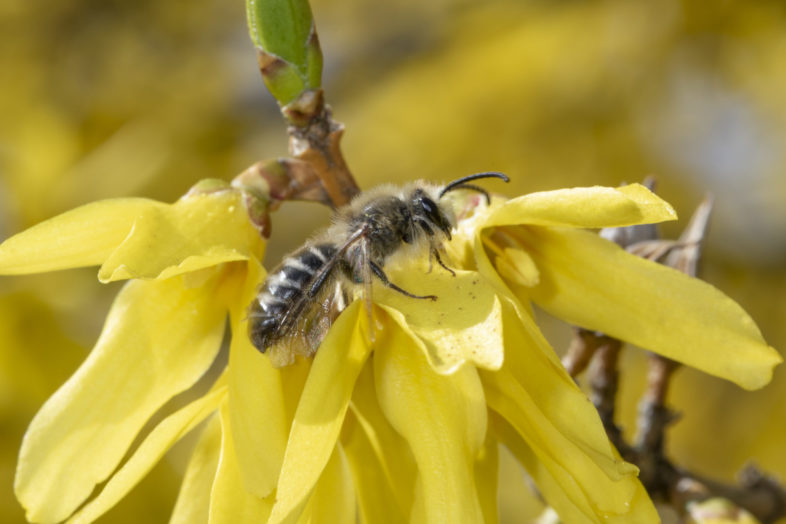
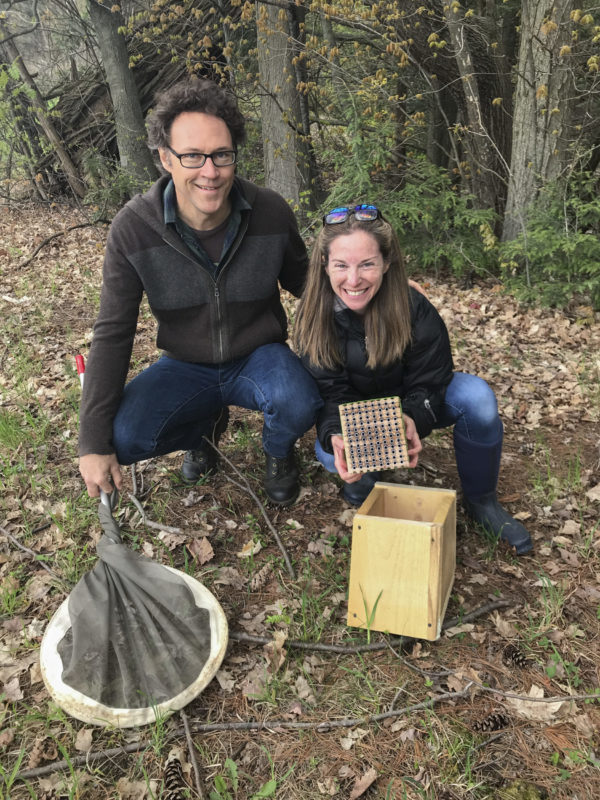
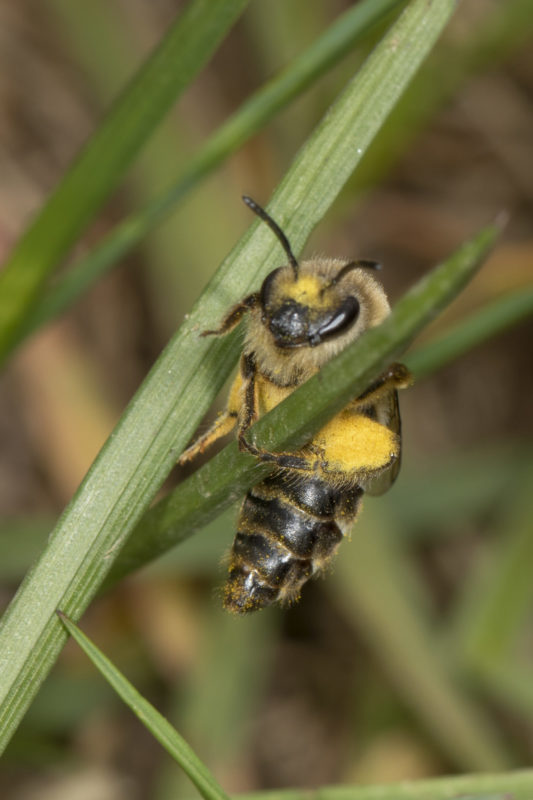

Our blueberry and raspberry fields are abuzz now with hundreds of hives placed there for pollination of the blossoms.